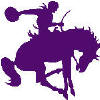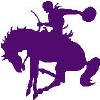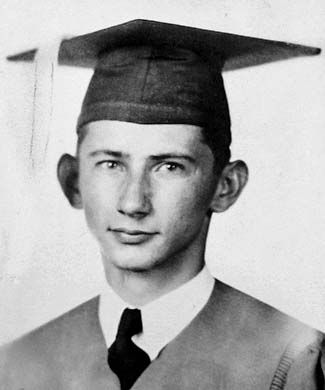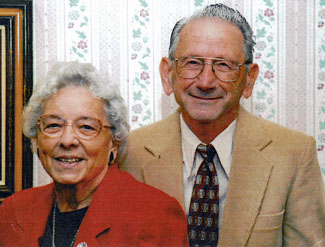
 ARCOLA ALUMNI ASSOCIATION
ARCOLA ALUMNI ASSOCIATION
Amazing ARCOLA, ILLINOIS

 Bob Van Cleave graduated 75 years ago with the Arcola High School Class of 1941, just a few months before our country became involved in World War II.
Some of Bob’s earliest memories were formed on the farm during the years of The Great Depression, where he developed his interest in air power and flying.
While Van Cleave states he was quiet in his younger years, at nearly 93 years now, his mind is sharp and allows him to readily share his stories
about growing up on the farm, and how those difficult times had a lasting effect on his generation. He and others have learned to sacrifice,
while also learning what is important in life.
Bob Van Cleave graduated 75 years ago with the Arcola High School Class of 1941, just a few months before our country became involved in World War II.
Some of Bob’s earliest memories were formed on the farm during the years of The Great Depression, where he developed his interest in air power and flying.
While Van Cleave states he was quiet in his younger years, at nearly 93 years now, his mind is sharp and allows him to readily share his stories
about growing up on the farm, and how those difficult times had a lasting effect on his generation. He and others have learned to sacrifice,
while also learning what is important in life.
Robert Lee Van Cleave, son of farming parents Charles and Daisy Weidner Van Cleave, was born at home five miles northeast of Arcola on January 19, 1924. Bob, the seventh of nine Van Cleave children, started school in 1929 at the age of five. He attended the Allison Country School, which was located more than a mile southwest of his home. Both Bob’s mother and father served as board members for the Allison School and his older sister, Bessie, was one of his teachers in the country school.
With some of his older siblings already grown and away from home, Bob’s older sister, Florence, took on many family responsibilities and helped her mother care for the younger children. At age three or four, Bob swallowed a nickel that blocked his air supply. As he lost consciousness, it was Florence who hoisted her little brother over her shoulder and carried him more than a quarter mile to locate their father. It is believed the bouncing motion of Florence’s hurried steps caused the nickel to dislodge and save Bob’s life.
Van Cleave’s father passed away in 1931 when Bob was only seven years old and his memories of his father are limited. Daisy and her children were able to remain on the farm she and her husband had purchased a decade earlier. As Bob recalls, his parents gave $300.00/acre for their small farm. While many lost their farms during The Depression, Mrs. Van Cleave and her children were able to work together to save their farm. At the height of The Depression, Bob remembered nearby land selling for $65.00/acre and corn at 9 cents a bushel. Some burned their corn crop to heat their homes, as the corn was less expensive than coal at the time. It was during these difficult financial times that Bob learned how to make and repair what the family needed, a skill that has remained with him throughout his life.
Although Bob states he felt somewhat isolated on the farm as a young boy, he realizes he and his family were fortunate to live on the farm where their livestock and garden produce provided most of the food their large family needed in The Depression years. He remembers driving a steel-wheeled tractor when he was just ten years old and planting corn with horses in 1937, when he was an eighth grade student. Bob also recalls their automobile was jacked up on blocks, as there was no money for gasoline in the lean years.
As a grade school student, Bob accompanied his brother to the broom corn fields and learned how to cut the heads off the plants so the broom corn moved through the seeder properly. He earned 75 cents for his day’s work, “the first fifty cent piece and quarter that I had ever seen as mine.” Although Bob states he only went to the fields a few times, he still has the broom corn knife he used as a child.
The Van Cleave rural home had no electricity or running water until the early 1940s, after Bob graduated high school. As a young boy, Bob had an interest in flying kites and making things that turned in the wind. When he was a teenager, the family was able to have a radio that was powered by a six volt battery. However, the radio had to be transported to Arcola to be recharged each time. In an effort to produce his own electricity, Bob used a draw knife and plane to make a flat propeller from a piece of lumber. He fastened the propeller to a salvaged six volt generator and was able to produce 30 amps of electricity. Bob was quite pleased with his creation until the propeller met a high wind one day. He heard a terrible noise as his propeller disintegrated in the higher winds. Bob had not yet designed a wind break. He states his interest in air progress became the subject of an assigned theme in his high school English class, resulting in “probably the only A I ever got in English.”
While much of his young life revolved around school and hard work on the farm, Bob remembers some fun times when he was able to attend the homecoming festivities in Arcola, where the broom corn castle was built. He also recalls barnstorming pilots, in World War I “Jenny” type airplanes, came to the festival to offer plane rides. Bob’s interest in aviation spiked when Charles Van Cleave, his older brother, was able to purchase an airplane ride for Bob. Another festival provided some live entertainment when a Wild West show was presented in a field outside town. Bob witnessed a group of Indians on horseback chasing a covered wagon around the field at full speed. The Indians shot a flaming arrow into the covered wagon as he watched the cover burn.
After completing eight grades at Allison School, Bob and most of his siblings attended Arcola High School, with the oldest graduating twenty-three years before the youngest: Gladys Van Cleave Smith (1924), Bessie Aleta Van Cleave Little (1926), Florence Pauline Van Cleave, Edna Dove Van Cleave (who passed away at age five), Charles Carlton Van Cleave, Jr., Kathryn Louise Van Cleave (1937), Robert Lee Van Cleave (1941), Christine LaVern Van Cleave Jones (1943) and Delores Fae Van Cleave Edwards (1947).
Bob was able to attend Arcola High School by walking more than two miles each morning to catch a ride into Arcola with a neighbor, Ralph Shores. Ralph’s daughter, Harriett, was Bob’s friend and classmate. Each school day afternoon, he returned to his neighbor’s home and then walked an additional two miles to his home. Classmates Gerald Bright and Don Rentschler were Bob’s close friends at AHS and Agriculture, Biology, Geometry and Band were Bob’s favorite classes. Bob was a member of Arcola’s Future Farmers of America and his Ag teacher, Mr. J.W. Meridith, was his favorite. Bob remembers one particular day in his freshman Ag Class (1937-38) when a representative from one of the high school committees entered the room with a special request. She asked the Ag students to search their farm and ranch publications to find a picture of a rider on a bucking horse. The students were able to locate such a picture in one of their magazines and it is believed this was the first silhouette used as the artistic symbol for the Arcola Purple Rider.
Bob relates his “thirst for music” inspired him to clean ditches for 2-3 weeks so he might purchase a $35.00 used cornet from classmate Harriett Shores. He played his cornet in the orchestra and was able to attend a few home football games because he also played bass drum in the marching band.
The Arcola Township High School class of 1941 graduated 46 students on Thursday, May 29th. Bob’s class included many whose names are still familiar with local readers, including three couples who married: Don Black, Gerald Bright, Helen Bryant Seitz, Millard Fortney, Bob Ghere and Ruth Grant Ghere, Harry Ghere, Alberta Hilgenberg Brehm, Joe Hopkins and Sarah Johnson Hopkins, Albert Kearns, Wanda Rayburn Whipple and Neil Whipple, Margie Seaman Riley, Phyllis Smith, Margaret Sylvester Biggs and George Wilkerson.
Following high school, Bob met Margaret Ghere during a church youth meeting at the home of a friend, Don France. Margaret was younger and had graduated with the AHS Class of 1943. Bob remembers he and Margaret went to Mike Poulos’ Arcola Candy Kitchen, or possibly another business owned by a Mr. Davis, on their first date. He recalls both businesses were “very lively places” with jukeboxes and dancing. To his dismay, Bob confesses he was not much of a dancer.
Bob operated the farm for his family after he completed high school. While many of his high school classmates were called to serve during World War II, Bob was given a farm deferment during the early years of the war. His keen interest in aviation and desire to become a pilot prompted Bob to study so he might learn to fly on his own. He was able to earn a private pilot’s license and hoped to serve in the Air Force. He followed the air war closely in the newspapers and was then called up for his physical examination in Chicago very late in World War II. The war ended before Bob was called to active duty. Now, more than seventy years later, he is “very humble” that he did not have to go to war and has such great respect for his relatives and friends who did serve, and especially for those who were wounded, including Arcola’s Gerald Bright and Bill Dilliner. Following her high school graduation in 1943, Margaret Ghere rode the “Pennsy” train to Decatur each week in order to work a printing press in a war plant. She later worked at a hardware store in Arcola.
Rev. H. L. Hayes married Bob and Margaret at the Arcola First Christian Church on Easter Sunday, April 6, 1947. The couple first lived in the Van Cleave family farm home northeast of Arcola, and their first daughter, Sandra, was born in 1948. Dale followed in 1950, Nancy in 1953, Dean in 1956 and Dwayne in 1961. All were raised on the Van Cleave family farm and attended Mt. Gilead United Methodist Church near their home. Bob and Margaret purchased a boat and their children learned to water ski in their free time in the summers. He also remembers their family camping trips when they created their own camper by putting a tarp over the bed of a truck.
Bob had been baptized in the Mt. Gilead Methodist Church at an early age. After their marriage, both Bob and Margaret became active leaders at the rural church, located northeast of Arcola. Bob served as church superintendant, on the church board and as trustee. He was a Sunday school teacher for over forty years, often teaching his own children. Bob was honored to assist with the closing service of the Mt. Gilead United Methodist Church in June 2010, and remembers how each member lit a candle as the service ended so they might carry the light of the Mt. Gilead church with them and out into the world.
During his working years, Bob farmed his family’s ground, rented additional land and also did custom farm work. He did spring and fall work for the Agricultural Stabilization and Conservation Service program, helped with construction of the Galton elevator and took on other jobs to supplement his income, especially during years when his children were in college. With his pilot’s license, Bob was also able to do some aerial photography for the U.S. Department of Agriculture. Bob’s mother passed away in 1978 and the Van Cleave family farm was subsequently sold. Bob’s experience with agriculture programs led to his new work as a claims adjuster with Federal Crop Insurance in 1980. He continued with the program and became a supervisor, audited claims and trained claims adjusters. Bob also did some work for Agriserve Company and ended his working years as a wheat claims adjuster for the ASCS program in the late 1990s.
During one of his ASCS farm visits in the early 1960s, Bob visited the Fred Wesch farm. Fred asked Bob to follow him to his shed because he had something he wanted to show him. Fred produced a framing that included individual photos of all forty-six 1941 AHS graduates in cap and gown, with identification of each student below their photos. While Bob does not know how long the framing had been in Fred’s possession, he did recall it had originally been displayed in the halls of AHS. Fred had retrieved the only unbroken framing from a trash pile at the high school that also included many broken framings of other graduating classes. Wesch offered the framing to Bob, who gladly accepted the gift. Bob has guarded the 1941 class photos all these years and is now donating the framing to the Arcola Alumni Association, with the hope it will be returned to the halls of Arcola High School. Because there was no yearbook for the AHS Class of 1941, the photos are a valued gift.
After their children were raised, Bob’s interest in flying was renewed. He continued his studies and was able to earn his commercial pilot’s license. He and a friend bought a Cessna 150 plane and later built and flew the first ultralight airplane in Douglas County.
Bob, Margaret and other Mt. Gilead church members became Habitat for Humanity home builders in the 1980s. Under the guidance of Tuscola contractor Dick Lake, they and members of other area churches traveled to Georgia, South Carolina, Louisiana and Mississippi in the early spring to provide their volunteer labor to build homes for the less fortunate. Bob noted they were able to complete a home in just one week’s time if the foundation was in place at the time they arrived. He was able to build Habitat for Humanity homes for several years and felt the efforts were a great experience for all involved.
Retirement in the late 1990s allowed more free time for Bob and Margaret to travel. They purchased an RV and then toured many western states. In an effort to avoid the long Illinois winters, the Van Cleaves spent several winter months in their camper in the Texas Chihuahuan desert. They were able to make many new friends on their camping trips. Bob and Margaret were also able to travel to Israel in 2000.
Bob’s hobbies include fishing, fly tying, furniture restoration and creating remote control airplanes. He and Margaret also greatly enjoyed cards games with their children, as well as with Margaret’s sisters, Evelyn Ghere Swisher (AHS ’45), Joyce Ghere Miller Hancock (AHS ’52) and their spouses.
When the Mt. Gilead United Methodist Church closed its doors, Bob and Margaret then attended the First Christian Church of Tuscola. While unable to be as active in their new church as they were at Mt. Gilead, the Van Cleaves attended church regularly. Bob states Margaret’s faith and determination inspired her to attend church, even as her health deteriorated and she had little remaining strength to walk. Bob’s own deep faith is evident and confirmed in his ability to not only recite scriptures, but also live by those scriptures. One of his recommendations for life is “Seek wisdom to make choices. The herd is not always right.”
After nearly sixty years in the country, Bob and Margaret retired to their new home in Tuscola in 2006. Bob served at the food bank and also enjoyed service projects with the Tuscola Kiwanis. He may now be found having coffee with friends, attending an occasional Arcola football game or at times using email and Facebook to communicate with family and friends. Bob emphasizes how important those good friends have been in his life and that he considers “a true friend as something that is irreplaceable.” His family and friends were at his side as he recovered from a 1991 accident when he suffered a fractured back, arm and severe concussion after falling through a crumbling barn roof.
Bob and Margaret shared more than sixty-eight years together before her passing on December 19, 2015. Each of their five children is an Arcola High School graduate: Sandra Fiscus of St. Joseph (Class of 1966), Dale Van Cleave of Springfield, OH (1968), Dr. Nancy Van Cleave of Charleston (1971), Dean Van Cleave of Tuscola (1974) and Dwayne Van Cleave of Tuscola (1979). Daughter Nancy was recently inducted into the 2016 class of Arcola High School distinguished alumni. Bob and Margaret have also been able to enjoy many good times with their six grandchildren and three great-grandchildren.
Arcola Alumni Association salutes 1941 AHS graduate Bob Van Cleave and would like to recognize other AHS graduates who have reached the age of 90 or beyond. If readers are AHS graduates age 90 or older, or if you know one of Arcola’s oldest graduates, please contact Sue Stout at 268-3190, or any Arcola Alumni Association board member.
Last Revision December 14, 2017